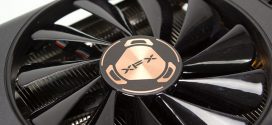Overclocking

Overclocking on AMD is fairly straight forward as unlike Kepler there is no crazy algorithms to worry about which sometimes plagues power users as the Nvidia GPU boost utilizes many factors to calculate how it throttles.
AMD just lets you set the clock and power target percentage and your off to the races. Sapphire offers the Trixx app for overclocking or you can use any other app should you want to overclock the card with everything available on the market it really is as simple as choosing which you want to use.
The Sapphire Radeon R9-280X Toxic comes out of the box with a 1150 GPU clock and that was already above what i could achieve with the MSI card so I was a bit apprehensive to think I could push much further but I can now say I was very wrong.
The overclockling I honestly did not expect much but the more i pushed the clock the more it kept going and the GPU finally came to rest at a final stable clockspeed of 1230MHz which is nothing short of amazing.
Next up was memory which comes stock clocked at 6400MHz and once again this card wa sbuilt to clock as it just kept going all the way to 7600MHz which means we saw an effective clock increase of 1200MHz which is huge.
The GPU overclock came out to 7% over an already very high clock and the memory topped out at 16% at very close to 8GHz speeds which means this card not only was clocked well from the factory but it was designed to push the limits.
TEMPERATURES

To measure the temperature of the video card, we used MSI Afterburner and ran Heaven Benchmark in a loop to find the Load temperatures for the video cards. The highest temperature was recorded. After looping for 10 minutes, Heaven was turned off and we let the computer sit at the desktop for another 10 minutes before we measured the idle temperatures.
| GPU Temperatures | Temperature (Idle/Load) |
| Nvidia GTX 690 | 32C/81C |
| Nvidia GTX TITAN | 31C/67C |
| Nvidia GTX 780 | 30C/65C |
| Nvidia GTX 770 | 34C/79C |
| Nvidia GTX 760 | 31C/67C |
| Sapphire R9-280X Toxic | 31C/68C |
The Tahiti GPU can pump some heat but the cooler in place on the Toxic is very capable. The only issue I can truly see would be that under load the cooler gets a bit louder than others I have tested but when placed in a chassis it is only slightly noticeable. One thing worth noting is that if I had the ability to adjust voltage downward I am betting the thermals could probably be lowered which would allow for lower fan speeds as it seems the Toxic has very choice GPUs which can clock very well so im sure Sapphire put a higher voltage in place just in case a GPU is a little weaker than others it will still hold the higher clock speed.
POWER CONSUMPTION

To get our power consumption numbers, we plugged in our Kill A Watt power measurement device and took the Idle reading at the desktop during our temperature readings. We left it at the desktop for about 15 minutes and took the idle reading. Then we ran Heaven Benchmark for a few minutes minutes and recorded the highest power usage.
The Toxic card even with its crazy high clock speed and triple fans pulls impressively low power as it barely exceeds that of the GTX770 we tested on the same platform and configuration.
Review Overview
Performance - 10
Value - 9.5
Quality - 9.5
Features - 9
Innovation - 9
9.4
Sapphire Built a card that can perform far beyond its price point and can clock even more. Anyone looking for an upgrade would be hard pressed to find a better value.
 Bjorn3D.com Bjorn3d.com – Satisfying Your Daily Tech Cravings Since 1996
Bjorn3D.com Bjorn3d.com – Satisfying Your Daily Tech Cravings Since 1996












Now this is what I’ve been waiting for! X2 of these in XFixe would be over-kill, but at a price that’s just incredible. (Oh and so much for those dipp-sticks saying AMD had done away with the XFire bridge.)
those are for the r9 290 series, 280 series below has crossfire bridges still